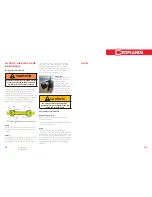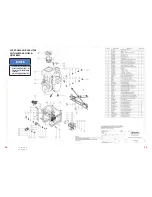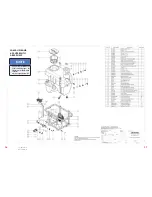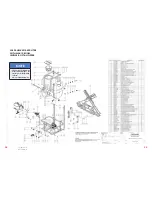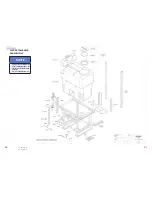
10
11
18/09/2016
LP-OMLINK-B
SAFETY WITH CHEMICALS
CONTINUED
Protective Safety Equipment
»
The amount and type of protective clothing
and equipment is determined by the type of
chemicals, degree and duration of exposure,
weather conditions and application equipment
used. Read and follow the direction on the label.
Over protection can be uncomfortable and
unnecessary. A respirator left hanging around
your neck is useless.
Measuring
»
Croplands’ calibrated, easy-pour 1, 3 and 5 litre
measuring jugs and the 25 litre chemical mixing
bucket are practical, easy to clean, U.V. resistant
and chemical resistant.
Clothing
»
Cover as much of the body as possible,
especially the neck, chest and forearms. Use
washable fabric overalls, disposable overalls or
preferably waterproof clothing especially when
coming in direct contact with pesticides. Wear
the trouser legs outside the boots.
Gloves and Boots
»
Never use leather or cloth materials because they
absorb pesticides and provide a constant source
of contamination. Gloves should be un-lined for
this reason. Croplands Nitrile Chemical Handling
Gloves are recommended.
Head & Face
»
Hard hats, washable hats, goggles, spray helmets
and face shields are important when handling
concentrates. Purchase Goggles that feature
sealed, anti-fog lenses for practical, comfortable
eye protection. Croplands Kasco Spray Hood is
fully approved for use with agrichemicals.
Respirators
»
Choose the correct type and have the correct
cartridge fitted. Replace cartridges regularly and
write the date on each cartridge. Ensure there is
an adequate fit to the face. Croplands’ respirators
are recommended for most spraying applications.
Operator Safety
»
When handling pesticides, always use elbow-
length gloves, long clothes and above all, a
respirator. If you and your clothing become
contaminated with spray,
DO NOT WORK
ON
. Stop work; remove clothing and wash
affected areas thoroughly with soap and water.
Put fresh clothing on before starting again. Ensure
that contaminated clothing is washed thoroughly
before being used again.
»
Don’t guess when choosing protective equipment.
Feel free to call Croplands and make use of our
safety information.
Spraying Precautions
»
Agricultural chemicals applied under
unfavourable weather conditions or from poorly
adjusted and operated equipment can cause
damage due to run-off and/or drift problems.
»
Crops and pastures are more susceptible to
spray drift of herbicides while people, stock and
water supplies are generally more susceptible to
insecticide drift. Pollution, crop damage and the
potential health hazards are something agriculture
can ill afford. It is simply not acceptable, socially
or environmentally. Additionally, pesticide, which
drifts or runs off the target, reduces the efficiency
of the pesticide on the target. Spray failures are
a waste of money and effort. In most cases you
have a legal obligation to ensure damage to
crops outside your property does not occur.
1.
Be SURE
the equipment is functioning correctly.
Check that nozzles are in good condition. Check
all other aspects of machine operation are
correct.
2.
Be SURE
pesticides are mixed thoroughly and
according to the label.
3.
Be SURE
the recommended registered pesticide
is used for the job at hand.
4.
Be SURE
pesticides are applied at
recommended rates.
5.
Be SURE
only target plants are sprayed.
6.
Be SURE
to follow the safety precautions
on the label.
CAUTION
Always read the chemical label carefully.

















